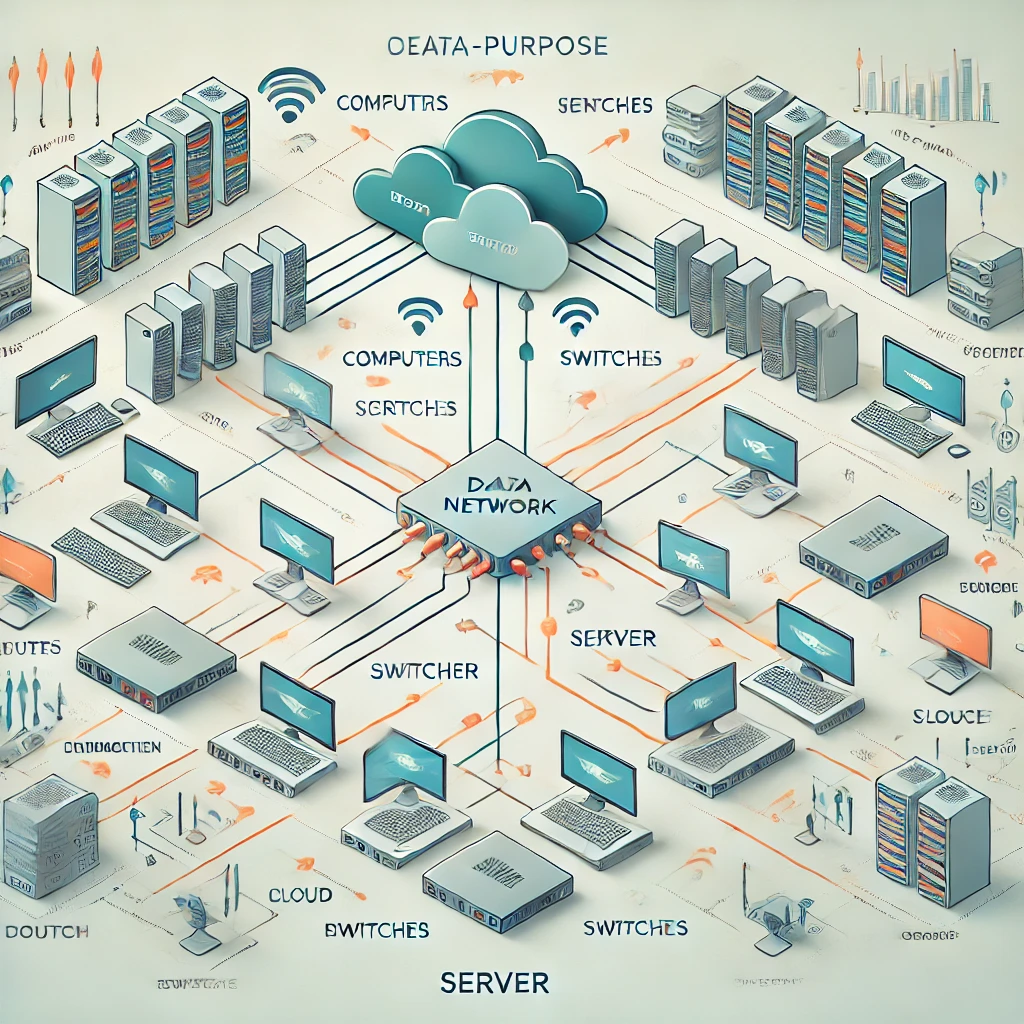Understanding Bandwidth and Throughput: Key Concepts in Networking

Categories:
4 minute read
In the realm of networking, two terms often come up that are crucial for understanding how data is transmitted over networks: bandwidth and throughput. While they are related, they represent different aspects of network performance. This blog post will delve into the definitions, differences, and implications of bandwidth and throughput, as well as their significance in real-world applications.
What is Bandwidth?
Bandwidth refers to the maximum data transfer capacity of a network connection. It is a measure of how much data can be sent over a network channel in a given amount of time, typically expressed in bits per second (bps). Bandwidth can also be represented in larger units such as megabits per second (Mbps) or gigabits per second (Gbps).
Characteristics of Bandwidth:
theoretical Limit**: Bandwidth represents the upper limit of data transfer capabilities. It does not guarantee that this amount of data will be transmitted at any given time; rather, it indicates the potential capacity.
Measurement: Bandwidth is measured at the physical layer of the OSI model, which includes the hardware technologies that facilitate communication over a network.
Influence on Speed: While higher bandwidth can lead to faster data transfer rates, it does not automatically equate to improved performance due to other limiting factors such as network congestion and latency. What is Throughput?
Throughput, on the other hand, is the actual amount of data successfully transmitted over a network in a specific period. It reflects real-world performance and is influenced by various factors including network traffic, errors, and latency. Throughput is also measured in bits per second (bps) but represents the practical delivery rate rather than the theoretical maximum.
Characteristics of Throughput:
Actual Performance: Throughput provides a realistic view of how much data can be transferred effectively under current conditions.
Affected by Network Conditions: Unlike bandwidth, throughput can vary significantly based on network congestion, interference, and transmission errors.
Measurement Across OSI Layers: Throughput can be assessed at various layers of the OSI model, providing insights into performance across different aspects of a network. Key Differences Between Bandwidth and Throughput
Understanding the distinction between bandwidth and throughput is essential for evaluating network performance. Here’s a comparison:
| Feature | Bandwidth | Throughput |
|---|---|---|
| Definition | Maximum data transfer capacity | Actual data transferred |
| Measurement | Theoretical limit (bps) | Real-world performance (bps) |
| Impact Factors | Hardware capabilities | Network conditions (traffic, errors) |
| Variability | Generally constant | Highly variable |
| Importance | Indicates potential speed | Reflects actual user experience |
The Relationship Between Bandwidth and Throughput
While bandwidth sets the stage for what is possible in terms of data transfer, throughput determines what users actually experience. It is important to note that throughput will always be less than or equal to bandwidth due to various limiting factors.
For instance, if you have a network connection with a bandwidth of 100 Mbps, this means that under ideal conditions, you could potentially transmit 100 megabits of data every second. However, due to factors such as network congestion or packet loss, your actual throughput might only be 80 Mbps or even lower.
Factors Affecting Throughput
Several elements can impact throughput:
Network Congestion: High levels of traffic can slow down data transmission rates.
Latency: The time it takes for data packets to travel from source to destination can affect how quickly information is received.
Errors and Retransmissions: If packets are lost or corrupted during transmission, they need to be retransmitted, which reduces overall throughput.
Protocol Overheads: Different networking protocols have varying levels of overhead that can affect how efficiently data is transmitted. Real-World Implications
Understanding bandwidth and throughput is crucial for both individuals and organizations when it comes to optimizing network performance. Here are some practical applications:
Internet Service Providers (ISPs) often advertise bandwidth capabilities but may not provide clear information about expected throughput during peak usage times.
Network Administrators need to monitor both metrics to identify bottlenecks and optimize configurations for better performance.
For businesses relying on cloud services or remote work solutions, ensuring adequate bandwidth and monitoring throughput can lead to smoother operations and improved productivity. Improving Bandwidth and Throughput
To enhance both bandwidth and throughput in your network environment, consider implementing the following strategies:
Upgrade Your Equipment: Ensure routers and switches support higher bandwidth standards (e.g., upgrading from 802.11n to 802.11ac Wi-Fi).
Optimize Network Configuration: Configure Quality of Service (QoS) settings to prioritize critical applications.
Reduce Interference: Minimize physical barriers and electronic interference that could affect wireless signals.
Regular Testing: Use tools like Iperf or speed test utilities to regularly measure both bandwidth and throughput for ongoing optimization. Conclusion
In summary, while bandwidth represents the maximum potential capacity for data transmission over a network, throughput reflects the actual performance experienced by users. Understanding these concepts is essential for anyone involved in networking—from casual users seeking better internet speeds to IT professionals managing complex systems.
By focusing on both improving bandwidth capabilities and maximizing throughput through strategic measures, individuals and organizations can ensure optimal performance in their networking environments. As technology continues to evolve, staying informed about these metrics will remain critical for navigating the digital landscape effectively.
Citations: [1] https://www.javatpoint.com/bandwidth-vs-throughput [2] https://stackoverflow.com/questions/36949735/what-is-the-difference-between-latency-bandwidth-and-throughput/39187441 [3] https://strom.wordpress.com/2020/07/30/network-solutions-blog-cost-effective-ways-to-improve-your-network-bandwidth/ [4] https://blogchiasekienthuc.wordpress.com/2014/05/19/a-guide-to-bandwidth-and-throughput/ [5] https://themeim.com/what-is-bandwidth-in-web-hosting/ [6] https://movement3.wordpress.com/2007/10/30/network-through-put-test/ [7] https://www.rswebsols.com/network-basics-bandwidth-latency-throughput/
Feedback
Was this page helpful?
Glad to hear it! Please tell us how we can improve.
Sorry to hear that. Please tell us how we can improve.